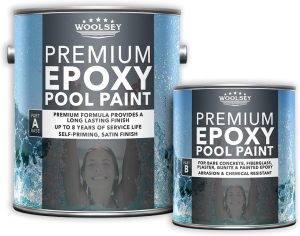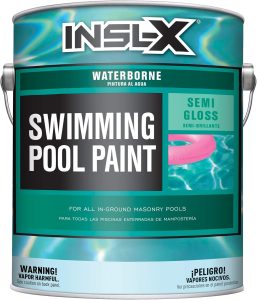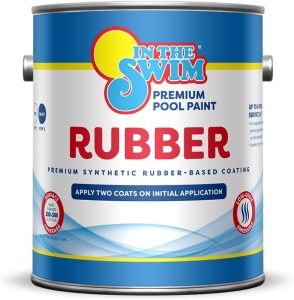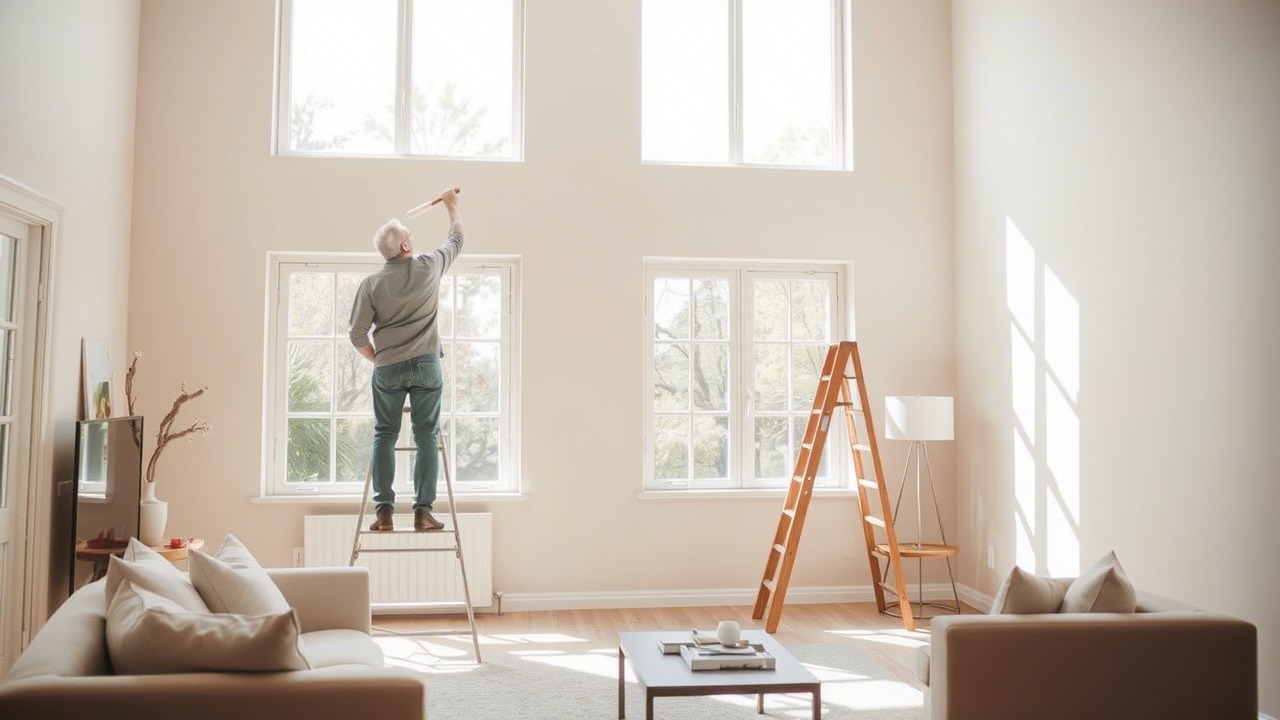When it comes to maintaining your pool, one of the most essential tasks is choosing the best paint for pools. Whether you’re looking to rejuvenate an older pool or give your new pool a fresh coat, the right pool paint ensures longevity, improves the aesthetics, and helps protect your pool from the wear and tear caused by chemicals, UV rays, and water exposure.
We’ll explore the different types of pool paints, what to consider when choosing the right paint for your pool, and some of the top-rated products on the market today. We’ll also answer some frequently asked questions to help guide your decision-making process.
Why Pool Paint Matters
Pool paint is designed to protect the surface of your pool and maintain its appearance. It serves several important functions, including:
- Protection Against Water Damage: Pool water can be highly corrosive, especially when treated with chemicals such as chlorine. Paint helps seal and protect the pool surface from this damage.
- Aesthetic Enhancement: Paint can give your pool a fresh, vibrant look, improving its visual appeal. You can also choose from a variety of colors and finishes to match your style and make the pool pop.
- Durability: Quality pool paints help preserve the integrity of the pool surface, preventing cracks, stains, and general wear and tear.
- Slip Resistance: Some pool paints are designed with textured finishes to help prevent slips and falls around the pool.
Now, let’s dive into the different types of pool paints available and how to choose the best one for your needs.
Types of Pool Paint
There are three main types of pool paint: epoxy, acrylic, and rubber-based. Each type of paint has its own unique benefits, and choosing the right one depends on factors like the pool surface material, your climate, and how much maintenance you’re willing to do.
1. Epoxy Pool Paint

Epoxy paint is one of the most durable and long-lasting options for pool surfaces. It is a two-part paint made of epoxy resins that, when mixed together, form a strong and hard finish that can withstand harsh chemicals, UV rays, and constant water exposure. Epoxy pool paints are ideal for concrete, gunite, and plaster pools.
Benefits of Epoxy Paint:
- Durability: Epoxy paint is known for its long-lasting finish, typically lasting between 5 to 7 years before needing reapplication.
- Chemical Resistance: Epoxy paints are resistant to the chemicals commonly found in pool water, including chlorine and other sanitizers.
- Smooth Finish: This paint provides a sleek, smooth surface that makes cleaning the pool easier.
- Vibrant Colors: Epoxy paints come in a wide variety of vibrant colors, giving you plenty of design options.
Drawbacks of Epoxy Paint:
- Surface Preparation: Epoxy paint requires proper surface preparation, including cleaning and sanding, to ensure good adhesion. This can be time-consuming.
- Limited Flexibility: Epoxy may not be ideal for pools that experience heavy shifting or cracking, as it can be prone to chipping in certain conditions.
Recommended Products:
- Behr Premium Plus Epoxy Pool Paint: Known for its durability and smooth finish, this epoxy-based paint is a great option for concrete and plaster pools.
- Krylon Epoxy Pool Paint: This product is highly resistant to chemicals, ensuring a long-lasting finish even with heavy chlorine use.
2. Acrylic Pool Paint

Acrylic pool paint is another popular option that provides a durable and attractive finish. This type of paint is water-based, making it easier to apply than epoxy. It’s ideal for use on plaster, fiberglass, and concrete pools and is available in a variety of finishes.
Benefits of Acrylic Paint:
- Ease of Application: Acrylic paints are easier to apply than epoxy paints. They can be brushed, rolled, or sprayed on and don’t require mixing like epoxy paints.
- Flexibility: Acrylic paint has better flexibility than epoxy, which makes it suitable for pools with more shifting or movement in the structure.
- UV Resistance: Acrylic paint offers excellent protection against UV rays, helping to prevent fading over time.
- Quick Drying: Acrylic paints dry faster than epoxy paints, allowing you to get your pool back in use more quickly.
Drawbacks of Acrylic Paint:
- Shorter Lifespan: Acrylic paint generally lasts around 2 to 3 years, which is shorter than epoxy paint.
- Less Durable: While it is resistant to the elements, acrylic paint is not as durable as epoxy, so it may need to be reapplied more frequently.
Recommended Products:
- In The Swim Pool Paint (Acrylic): This product is perfect for plaster, gunite, and fiberglass pools. It’s known for its vibrant colors and smooth application.
- Benjamin Moore Super Spec Pool Paint: A trusted brand with a reputation for long-lasting finishes, Benjamin Moore’s acrylic paint is an excellent option for pools that require flexibility and UV protection.
3. Rubber-Based Pool Paint

Rubber-based pool paint is another common choice for homeowners looking to paint their pools. This type of paint is easy to apply, resistant to algae growth, and provides a non-slip surface.
Benefits of Rubber-Based Paint:
- Non-Slip Finish: Rubber-based paints are ideal for creating a slip-resistant surface, making them a good choice for pool decks and other wet areas.
- Algae Resistance: Many rubber-based paints are formulated to resist algae growth, which can be a concern for pools that are not regularly treated.
- Affordable: Rubber-based pool paints are often more affordable than epoxy or acrylic paints, making them a great option for those on a budget.
Drawbacks of Rubber-Based Paint:
- Shorter Lifespan: Like acrylic paints, rubber-based paints tend to have a shorter lifespan, usually around 2 years.
- Less Durable Than Epoxy: Rubber-based paint may not hold up as well against chemicals, abrasions, or heavy pool use.
Recommended Products:
- Olympic Zeron Rubber-Based Pool Paint: This paint is known for its durability, ease of application, and resistance to algae. It works well for pools that need regular maintenance and affordable options.
- NuKote Rubber Pool Paint: NuKote’s rubber-based pool paint offers excellent flexibility, making it ideal for pools with structural movement.
Factors to Consider When Choosing Pool Paint
When selecting the best paint for your pool, it’s important to consider a variety of factors to ensure you make the right choice for your specific needs. Here are some key factors to keep in mind:
1. Pool Surface Material
Your pool’s surface material will determine which type of paint is best suited for the job. Concrete and gunite pools are great candidates for epoxy, while fiberglass pools may do better with acrylic or rubber-based paint.
2. Climate and Weather Conditions
The weather in your region will impact how long your paint job will last. In sunny, hot climates, you’ll need a paint with UV resistance to prevent fading, while in areas with lots of rain or humidity, you’ll need a paint that resists moisture and algae growth.
3. Pool Usage
If your pool is frequently used, you’ll need a more durable paint, like epoxy. For pools with lighter use, you may opt for acrylic or rubber-based paints.
4. Color Options
Consider the aesthetics of your pool when choosing a color. Epoxy paints typically offer a wider range of vibrant, glossy colors, while acrylic and rubber-based paints offer more subtle finishes.
How to Apply Pool Paint
Proper preparation and application are key to achieving a durable and attractive finish. Here’s how to apply pool paint:
- Clean the Pool Surface: Ensure the surface is free from dirt, algae, and old paint. You may need to scrub the pool with a brush and use a cleaner to remove stubborn stains.
- Repair any Cracks or Holes: Fill any cracks or holes with an appropriate filler and allow it to cure.
- Sand the Surface: Lightly sand the surface to help the paint adhere better.
- Apply Primer (if necessary): Some types of paint require a primer for better adhesion, especially epoxy-based paints.
- Apply Paint: Use a roller, brush, or spray gun to apply the paint in thin, even coats.
- Allow Drying Time: Allow the paint to dry between coats. Follow the manufacturer’s guidelines for curing time before refilling the pool.
Frequently Asked Questions
1. How long does pool paint last?
The lifespan of pool paint depends on the type used. Epoxy paint typically lasts 5-7 years, while acrylic paint lasts 2-3 years, and rubber-based paint may last around 2 years.
2. Can I paint my pool myself?
Yes, painting a pool is a DIY project, but it requires proper preparation and care. If you’re not confident, consider hiring a professional to ensure a quality finish.
3. What is the best paint for fiberglass pools?
Acrylic or rubber-based paints are generally recommended for fiberglass pools. Epoxy can be used but may require additional preparation for better adhesion.
4. Can I paint my pool in the winter?
It’s best to paint your pool in mild weather conditions. Avoid painting in extreme cold or high humidity, as it can affect the curing process.
5. Do I need to use a primer before painting my pool?
It depends on the type of paint. Epoxy paints often require a primer, while acrylic and rubber-based paints may not. Always follow the manufacturer’s instructions.
6. Can I paint over old pool paint?
Yes, you can paint over old pool paint, but you must remove any peeling or damaged areas. Proper cleaning and surface preparation are key to achieving good results.
7. Is pool paint safe for the environment?
Many pool paints are designed to be eco-friendly, but always check the label to ensure they are non-toxic and safe for your pool’s ecosystem.
Conclusion
Choosing the best paint for your pool is a crucial step in maintaining its appearance and durability. Whether you opt for epoxy, acrylic, or rubber-based paint, each type offers distinct benefits suited to different pool types and environmental factors. By considering your pool’s surface, local climate, and usage, you can select the ideal paint to protect and beautify your pool for years to come.


Leave a Reply